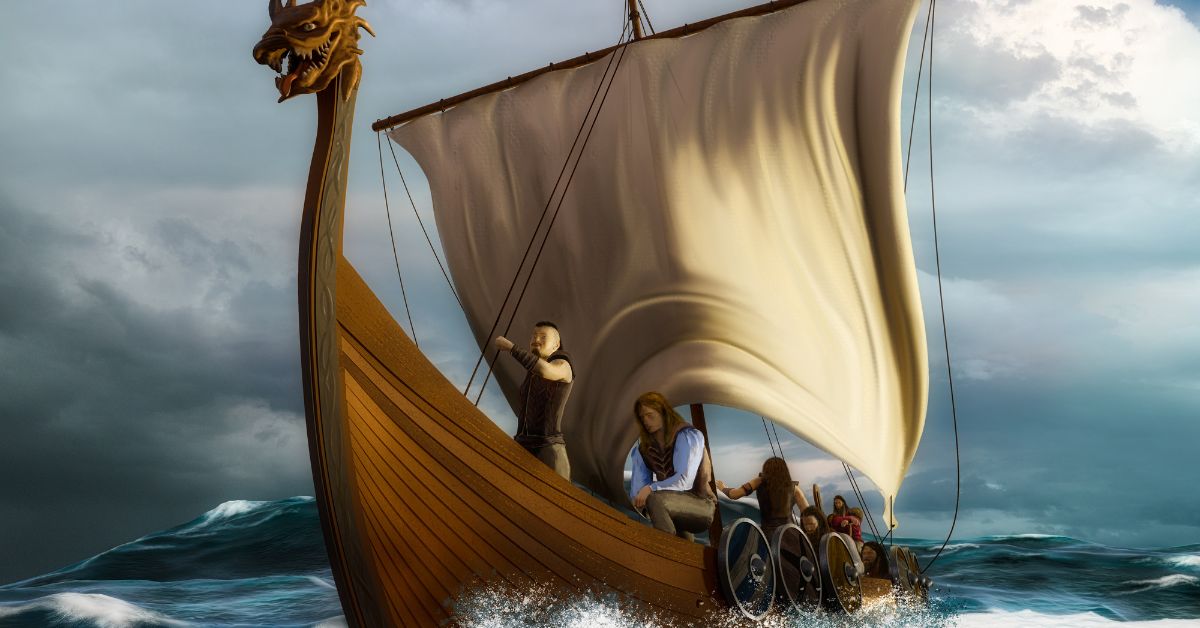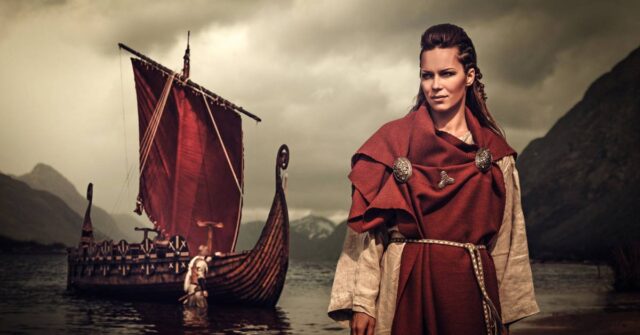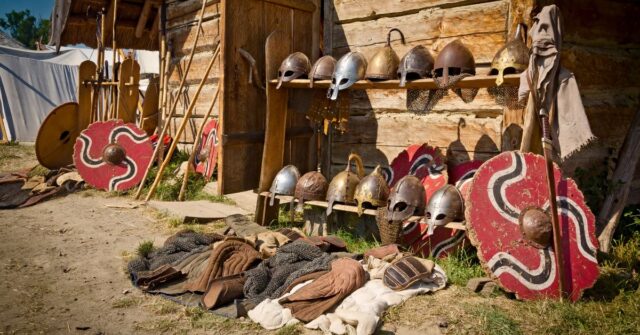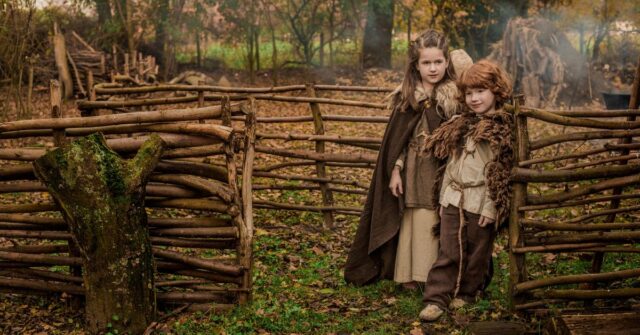Trading in the Viking Age was a vital component of their culture and economy, allowing them to establish connections and influence across vast distances.
This article explores the intricacies of Viking trade, detailing the key trading centers, routes, goods, and the economic and cultural impact of their extensive networks.
Introduction
The Viking Age, spanning from the late 8th to the early 11th century, was a time of exploration, conquest, and significant trade.
The Vikings, known for their seafaring skills, established extensive trade routes that connected them with diverse cultures and regions.

Overview of the Viking Age
The Viking Age, spanning from the late 8th century to the early 11th century, was a time of remarkable expansion for the Norse people.
Known for their seafaring prowess, the Vikings explored, raided, and traded across vast distances, reaching as far west as North America and as far east as Central Asia.
While their raids often grabs the most attention, trade played a crucial role in their society, allowing for the exchange of goods, culture, and ideas.
The Importance of Trade to the Vikings
Trade was vital to the Vikings, enabling them to acquire resources not available in their native Scandinavia.
Through extensive trade networks, they obtained luxury items like silks and spices, which were not only prized possessions but also symbols of status and wealth.
This exchange of goods fostered economic growth and facilitated cultural interactions with distant civilizations, significantly impacting Viking society and their historical legacy.
Major Viking Trading Centers
Major Viking Trading Centers were crucial hubs where goods were exchanged, and cultures intersected.
These centers, strategically located, facilitated the flow of various commodities and played a significant role in the Vikings’ economic success.
Hedeby
Hedeby was one of the most important Viking trading centers due to its strategic location at the base of the Jutland Peninsula.
This positioning allowed it to become a key point for both maritime and overland trade routes, connecting different parts of Europe.
Location and Significance
Hedeby, located near the modern-day border between Germany and Denmark, was one of the most important Viking trading centers.
Its strategic position at the base of the Jutland Peninsula made it a key point for both maritime and overland trade routes.
Hedeby connected the North Sea to the Baltic Sea, facilitating the flow of goods between Scandinavia and the rest of Europe.
Goods Traded
In Hedeby, a variety of goods were traded, including furs, slaves, jewelry, and textiles. The town was known for its vibrant market, where traders from different regions exchanged wares.
The archaeological findings in Hedeby reveal a bustling marketplace with goods from as far away as the Islamic Caliphate, showcasing its significance in international trade.

Protection and Security Measures
To ensure the safety of merchants and their goods, Hedeby was well-fortified. The town was protected by a semi-circular earthwork, and the harbor was safeguarded with a boundary of stakes.
These defenses were crucial in maintaining Hedeby’s status as a secure trading hub, especially given the turbulent times and frequent conflicts of the Viking Age.
Birka
Birka, located on the island of Björkö in present-day Sweden, was a vital trading hub.
Established in the mid-8th century, Birka’s accessible location on Lake Mälaren attracted merchants from various regions, fostering significant commercial activity.
Establishment and Growth
Birka, located on the island of Björkö in present-day Sweden, was another prominent Viking trading center.
Established in the mid-8th century, Birka quickly grew into a vital trading hub due to its accessible location on Lake Mälaren.
The town attracted merchants from various parts of Europe, as well as the Byzantine Empire and the Islamic world.
Key Commodities
Birka was known for trading a diverse range of goods, including furs, iron, and textiles. The town also played a significant role in the slave trade, with many captives from Viking raids being sold in its markets.
Birka’s prominence in trade is evidenced by the numerous artifacts found there, such as coins from different regions and luxury items made from precious metals.
Ribe
Ribe, situated in modern-day Denmark, was among the earliest Viking trading towns.
Established in the early 8th century, Ribe served as a major commercial center, linking the Viking world with broader European trade networks.
Role in Viking Trade
Ribe, situated in modern-day Denmark, was one of the earliest Viking trading towns, established in the early 8th century.
It served as a major commercial center, connecting the Viking world with the rest of Europe.
Ribe’s location on the west coast of Jutland allowed for easy access to the North Sea, making it a pivotal point for maritime trade routes.
Archaeological Findings
Excavations in Ribe have uncovered a wealth of information about Viking trades.
Artifacts such as pottery, glass beads, and tools provide insights into the goods that were traded and the craftsmanship of the Viking people.
These findings highlight Ribe’s importance as a bustling trade center and its role in the broader Viking trade network.
Viking Trade Routes
Viking Trade Routes were extensive and varied, stretching from the British Isles to the Byzantine Empire.
These routes facilitated the movement of goods and cultural exchanges, playing a crucial role in the Vikings’ economic activities.
Western Trade Routes
Western Trade Routes included voyages to the British Isles and beyond.
The Vikings established significant trade centers in places like Dublin and York, which became hubs of commerce and cultural exchange.
Routes to the British Isles and Beyond
The Vikings established extensive trade routes to the British Isles and beyond. They frequently traveled to Ireland, where they founded significant trading towns like Dublin.
These routes also extended to the coasts of France and Spain, where the Vikings traded goods such as furs, amber, and slaves for wine, silver, and other luxury items.

Establishment of Trade Centers in Dublin and York
In addition to Dublin, the Vikings established a major trading center in York, England. Both towns became important hubs for commerce and cultural exchange.
Viking settlers in these towns not only traded but also produced goods like jewelry, pottery, and leather items, contributing to the local economies and influencing the development of urban centers in medieval Europe.
Eastern Trade Routes
Eastern Trade Routes, primarily utilized by Swedish Vikings, extended through the river systems of Russia, reaching the Byzantine Empire and beyond.
These routes connected Scandinavia with distant regions, enabling the exchange of goods and ideas.
Routes through Russia to the Byzantine Empire
The eastern trade routes of the Vikings, primarily utilized by Swedish Vikings, extended through the river systems of Russia, reaching the Byzantine Empire and beyond.
The Dnieper and Volga rivers were crucial waterways that facilitated the movement of goods such as furs, wax, and slaves to markets in Constantinople and the Islamic world.
Key Trade Hubs: Novgorod and Kiev
Novgorod and Kiev were central nodes in the Viking trade network in the east. These towns served as key trade hubs where goods from Scandinavia were exchanged for Byzantine and Islamic products.
The wealth and cultural diversity of these towns underscore the significance of the eastern trade routes in Viking commerce.
Goods Traded by the Vikings
Goods Traded by the Vikings were diverse and reflected their extensive trade networks. They exported items like furs, amber, and slaves, while importing luxury goods such as silks, spices, and silver.
Exports
Exports were crucial to Viking trade, showcasing the resources of Scandinavia. The Vikings traded furs from animals like foxes and beavers, highly valued in Europe and the Middle East.
Amber, known as “Nordic gold,” was used in jewelry and decorative items. Slaves, captured during raids, were also a significant part of their trade, sold in markets as far as the Islamic world.
These exports demonstrate the Vikings’ extensive trade networks and their ability to connect distant regions.
Furs and Animal Skins
Furs were among the most valuable export goods for the Vikings. High-quality pelts from animals like foxes, beavers, and martens were highly sought after in Europe and the Middle East.
The fur trade was a lucrative business, with furs often being traded for silver and other precious items.
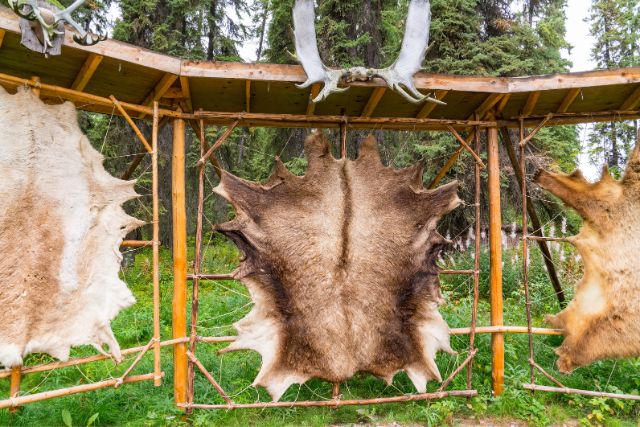
Amber
Amber, often referred to as “Nordic gold,” was another significant export.
The Baltic region was rich in amber deposits, and this fossilized tree resin was prized for its beauty and used in jewelry and decorative objects.
Amber trade routes extended from the Baltic Sea to the Mediterranean, illustrating the wide reach of Viking trade.
Slaves
The Vikings were heavily involved in the slave trade. Slaves, or thralls, captured during raids were sold in markets across Europe and the Islamic world.
This trade was a substantial part of the Viking economy, with many slaves being transported along well-established trade routes to regions as far away as Baghdad.
Iron and Metal Goods
Iron was a crucial export commodity for the Vikings. They were skilled metalworkers, producing high-quality weapons, tools, and other goods.
Viking ironwork was renowned for its durability and craftsmanship, making it highly desirable in trade.
Imports
Imports played a significant role in Viking trade.
The Vikings acquired a variety of goods from different regions, including luxury items like silks and spices from the Byzantine Empire and the Islamic world, which were highly valued in Viking society.
Silks and Spices
The Vikings imported luxury goods like silks and spices from the Byzantine Empire and the Islamic world.
These items were not only used for personal adornment but also served as status symbols among the Viking elite.
The presence of these exotic goods in Viking settlements reflects the extensive reach of their trade networks.
Wine and Glassware
Wine was a highly prized import, especially from regions like Francia and the Mediterranean.
Glassware, too, was a significant import, with finely crafted glass items being used for both practical and decorative purposes.
These goods were often found in the homes of wealthy Vikings, indicating their high value and status.
Silver and Coins
Silver was the backbone of the Viking economy. The Vikings obtained silver through trade and raids, particularly from the Islamic world, where large silver mines were in operation.
Coins from various regions, including Arabic dirhams, have been found in Viking hoards, illustrating the importance of silver in their trade and economy.
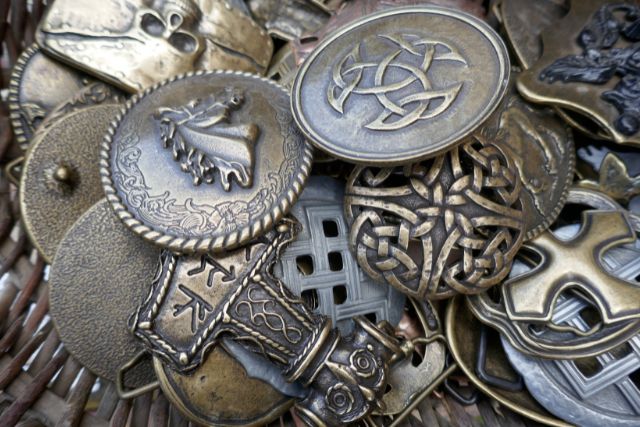
Economic and Cultural Impact
The economic and Cultural Impact of Viking trade was profound, shaping both their economy and interactions with other cultures.
The shift from a barter to a bullion economy and the cultural exchanges facilitated by trade had lasting effects on Viking society.
Shift from Barter to Bullion Economy
The shift from Barter to Bullion Economy marked a significant development in Viking trade.
The use of silver as a medium of exchange enabled more complex and extensive trade networks, enhancing the efficiency and reach of their commercial activities.
Use of Silver in Trade
Initially, Viking trade relied heavily on barter. However, over time, the economy shifted towards the use of bullion, particularly silver, as a medium of exchange.
This shift facilitated more complex and extensive trade networks, allowing the Vikings to engage in commerce with a wider range of partners across Europe and beyond.
Development of Trade Silver and Arabic Coins
The influx of Arabic coins and other forms of silver significantly impacted the Viking economy.
These coins were often melted down and used as bullion, which could be weighed and divided as needed for transactions.
This practice helped standardize trade and made it easier for the Vikings to conduct business over long distances.
Cultural Exchanges and Influence
Cultural Exchanges and Influence were integral to Viking trade.
Through their interactions with other cultures, the Vikings adopted new technologies and ideas, enriching their own society and leaving a lasting legacy on the regions they traded with.
Spread of Ideas and Technologies
Trade was a conduit for the exchange of ideas and technologies.
Through their interactions with other cultures, the Vikings adopted new technologies, such as improved shipbuilding techniques and agricultural practices.
These exchanges enriched Viking society and contributed to their ability to expand and thrive
Archaeological Evidence of Cultural Exchange
Artifacts found in Viking settlements, such as Byzantine silks, Islamic coins, and finely crafted glassware, provide concrete evidence of cultural exchange.
Items such as Arabic coins found in Scandinavia and Norse artifacts in distant lands like Byzantium illustrate the Vikings’ far-reaching trade connections and their interactions with diverse cultures.
Challenges and Risks in Viking Trade
Challenges and Risks in Viking Trade were numerous, including the threat of piracy and the need for political and diplomatic agreements to ensure safe trading conditions.
These challenges underscored the perilous nature of long-distance trade during the Viking Age.
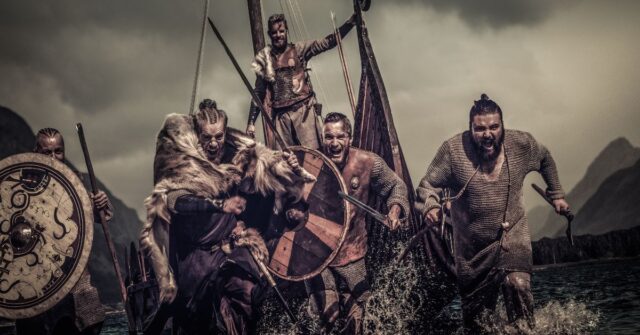
Plundering and Piracy
Plundering and Piracy were significant risks for Viking traders. Trading ships, often laden with valuable goods, were prime targets for pirates and rival raiders, making trade a dangerous endeavor.
Vulnerabilities of Trading Ships
Trading in the Viking Age was fraught with risks, one of the most significant being the threat of plundering and piracy.
Viking trading ships, while robust and versatile, were prime targets for pirates and rival raiders.
These vessels, laden with valuable goods, often sailed through dangerous waters, making them vulnerable to attacks.
The accounts of missionary Ansgar’s journey to Birka, where he was robbed by pirates, exemplify the constant danger faced by Viking traders.
Notable Incidents of Piracy
Numerous historical records detail incidents of piracy that disrupted Viking trade. These attacks were not only carried out by other Vikings but also by various groups along the trade routes.
Such incidents could result in significant losses of goods and even lives, underscoring the perilous nature of long-distance trade during this period.
Political and Diplomatic Challenges
Political and Diplomatic Challenges included securing safe trade routes and negotiating treaties.
The protection provided by local kings and magnates was crucial for maintaining the safety of merchants and their goods.
Role of Kings and Local Magnates
The protection of trade routes and trading centers was crucial, and this responsibility often fell to local kings and magnates.
These rulers provided the necessary security to ensure safe trade, but this protection came at a cost. Merchants were required to pay taxes and duties, which could be substantial.
The economic prosperity of trading towns like Hedeby and Birka was closely linked to the political stability and protection offered by their rulers.
Trade Agreements and Treaties
Diplomatic agreements were essential for maintaining safe trade routes.
Historical records, such as the Annals of Fulda, describe treaties between Viking rulers and neighboring kings to secure peaceful trading conditions.
These agreements facilitated the movement of goods across borders and reduced the risks associated with trading in foreign lands.
The ability to negotiate and maintain these treaties was a critical aspect of successful Viking trade.
Legacy of Viking Trade
The legacy of Viking Trade can be seen in the long-term economic impacts and the continuing cultural influence.
Viking trade transformed market towns into economic hubs and left a lasting legacy on trade practices and cultural exchanges.
Long-term Economic Impacts
Long-term Economic Impacts of Viking trade included the development of market towns and the establishment of trade practices that influenced future generations.
The economic prosperity generated by trade laid the foundations for the growth of urban centers in medieval Europe.
Transformation of Market Towns
The economic impact of Viking trade extended far beyond their era. Market towns established during the Viking Age, such as Hedeby and Birka, laid the foundations for future urban centers.
These towns thrived on the influx of goods and wealth generated by trade, evolving into significant economic hubs.
The transformation of these market towns into prosperous centers of commerce highlights the lasting influence of Viking trade on European economic development.
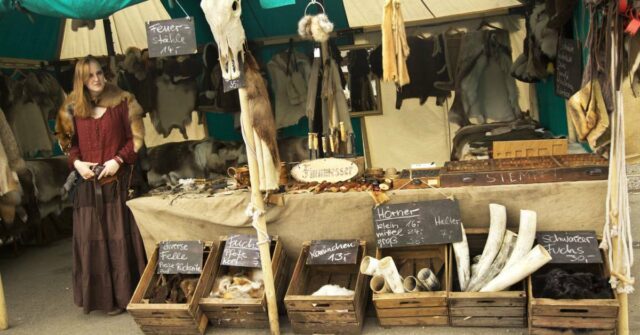
Influence on Modern Trade Practices
The Vikings’ innovative approaches to trade, such as the use of silver bullion and the establishment of extensive trade networks, have left a lasting legacy.
Modern trade practices, including standardized weights and measures and the concept of trade hubs, can trace their origins back to these early Viking innovations.
The Vikings’ ability to adapt and integrate various trade systems into their own economy set the stage for the sophisticated trade practices we see today.
Cultural and Historical Legacy
The cultural and Historical Legacy of Viking trade is evident in the artifacts and archaeological discoveries that provide insights into their extensive trade networks and interactions with other cultures.
The ongoing fascination with Viking history and culture underscores their enduring influence.
Artifacts and Archaeological Discoveries
Archaeological excavations continue to uncover evidence of the Vikings’ extensive trade networks and cultural interactions.
Artifacts such as foreign coins, luxury goods, and everyday items found in Viking settlements provide a tangible connection to their trade activities.
These discoveries offer valuable insights into the daily lives of the Vikings and their interactions with other cultures.
Continuing Influence in Popular Culture
The fascination with Vikings and their way of life endures in popular culture.
From television shows and movies to literature and video games, the legacy of Viking trade and exploration continues to captivate audiences.
This ongoing interest highlights the enduring impact of the Viking Age on our understanding of history and cultural identity.
Conclusion
Conclusion: Viking trade was a cornerstone of their society, enabling economic prosperity and cultural exchanges.
The extensive trade networks established by the Vikings had lasting impacts, shaping both their own society and the broader medieval world.
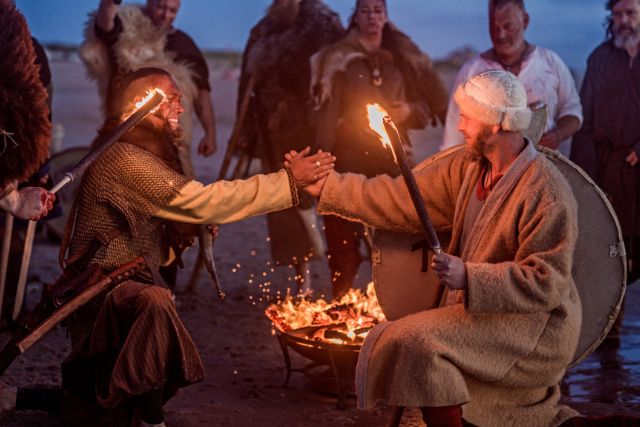
Summary of Viking Trade
The Viking Age was a period of significant economic and cultural exchange, driven by the Vikings’ extensive trade networks.
From the bustling markets of Hedeby and Birka to the far-reaching trade routes connecting Scandinavia to the Byzantine Empire and beyond, Viking trade played a crucial role in shaping the medieval world.
Their ability to navigate complex trade systems and foster cultural interactions left a lasting legacy that continues to influence modern society.
Reflection on the Significance of Trade in Viking Society
Trade was more than a means of economic survival for the Vikings; it was a cornerstone of their society. It facilitated the exchange of goods, ideas, and cultures, enriching Viking life and broadening their horizons.
The success of Viking trade is a testament to their adaptability, ingenuity, and resilience.
By examining the intricacies of Viking trade, we gain a deeper understanding of their contributions to history and their enduring influence on the world.

